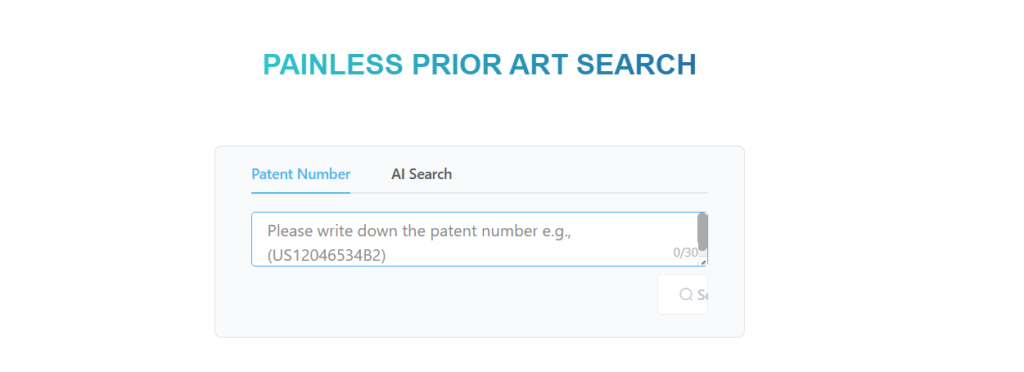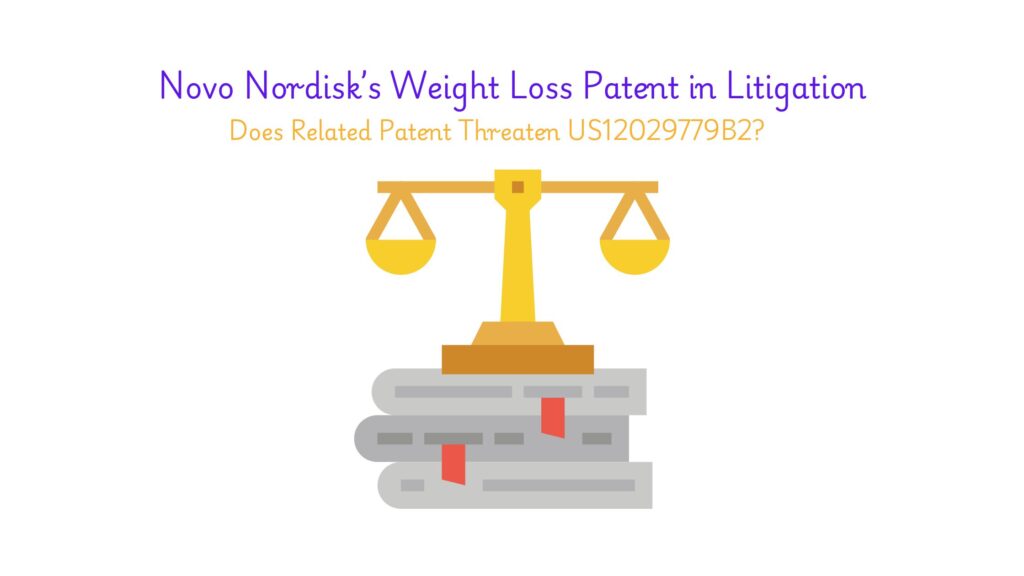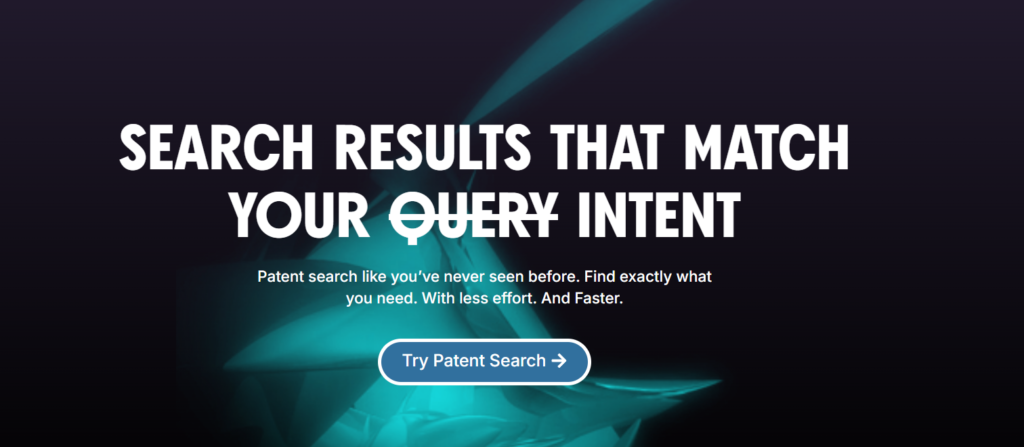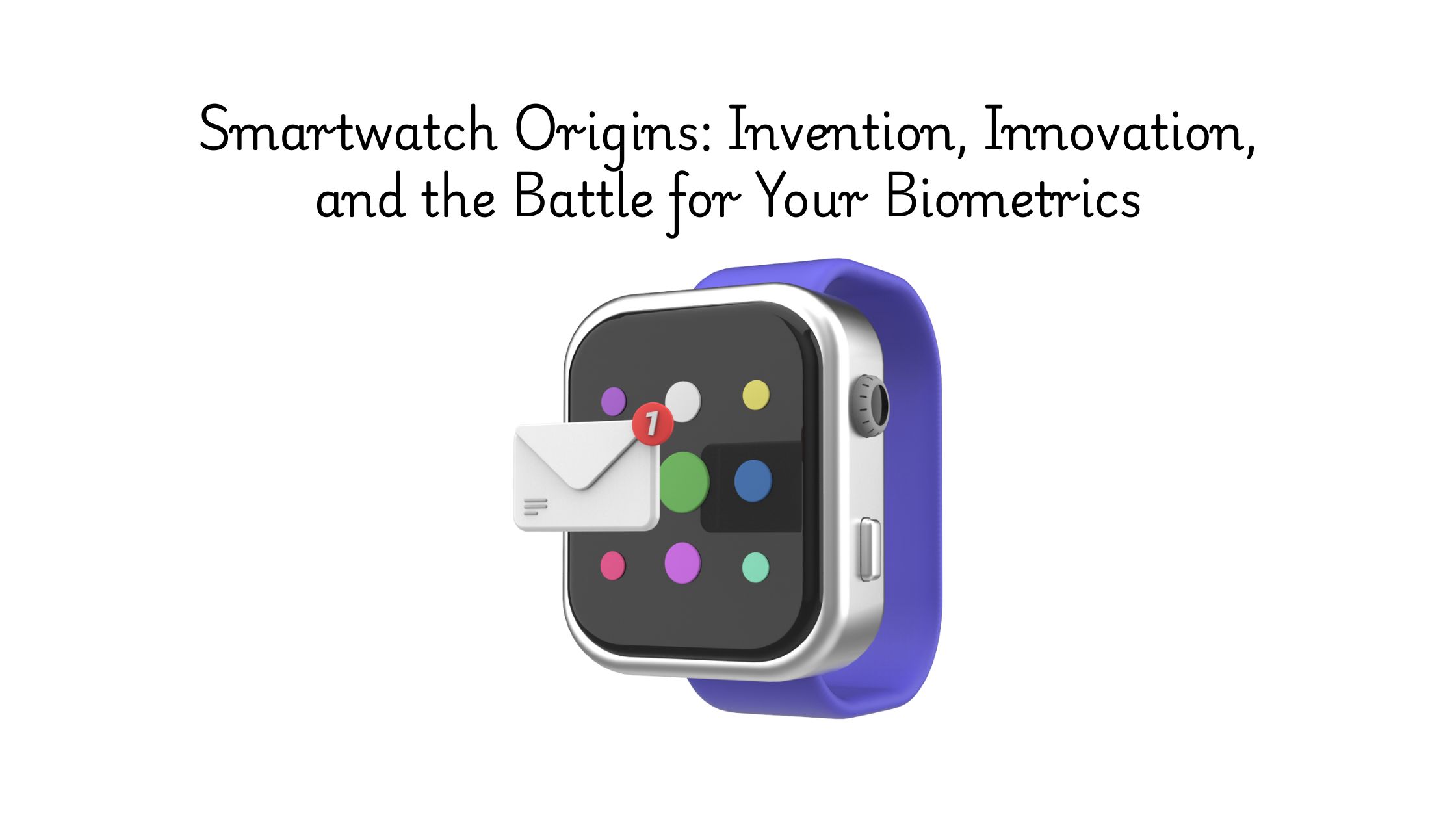The patent US12029779B2, assigned to Novo Nordisk A/S, is currently at the center of litigation in two cases: Novo Nordisk Inc. et al v. Mylan Pharmaceuticals Inc. and Novo Nordisk Inc. et al v. Sun Pharmaceutical Industries Limited et al.
This patent covers the use of semaglutide for weight management, including the treatment of obesity. It specifically claims methods of administering semaglutide in specific doses to achieve weight reduction while maintaining an improved safety profile. However, the validity of these claims depends on whether similar methods existed in related patents before the patent’s filing.
Related patents are crucial in patent litigation, as it can determine whether a patent should have been granted in the first place. By identifying earlier publications or patents with overlapping features, legal teams can assess the strength of Novo Nordisk’s claims. Using the Global Patent Search tool, we explore whether the US12029779 patent withstands scrutiny against related patent references.
Understanding Patent US12029779B2
Patent US12029779B2 covers the use of semaglutide for weight management, specifically targeting obesity and overweight conditions. It outlines precise dosage regimens that optimize weight reduction while maintaining an improved safety profile.
The patent focuses on administering semaglutide at higher doses to enhance effectiveness with fewer gastrointestinal side effects compared to existing treatments. Key features include:
#1. Semaglutide for weight management – The patent claims semaglutide as a treatment for reducing body weight, including in individuals with obesity, overweight conditions, or weight-related comorbidities.
#2. Optimized dosage regimen – It specifies once-weekly subcutaneous administration of semaglutide in doses ranging from 2.0 mg to 4.0 mg, with particular focus on 2.2 mg to 2.7 mg per week for effective weight loss.
#3. Improved safety-to-efficacy ratio – The patent highlights that higher doses of semaglutide provide greater weight loss benefits while maintaining a lower-than-expected increase in gastrointestinal adverse events, such as nausea.
#4. Pharmaceutical composition & delivery – Semaglutide is administered as a subcutaneous injection, formulated with excipients like buffers, isotonic agents, and preservatives to ensure stability and patient tolerability.
Potential Related Patent References for US12029779B2
#1. US20130090285A1
The patent application describes methods of using GLP-1 receptor agonists for weight management and diabetes treatment. It details dosage regimens, subcutaneous administration, and sustained-release formulations to optimize weight reduction while minimizing adverse effects. These features align with the claims in US12029779B2 regarding semaglutide administration for weight management.
Why this qualifies as Potential Related Patent?
- Method for reducing a subject’s body weight – Fully describes the use of GLP-1 receptor agonists for inducing weight loss, preventing weight gain, or controlling weight.
- Administration of semaglutide – Explicitly mentions semaglutide as one of the GLP-1 receptor agonists used in the treatment methods.
- Subcutaneous administration – States that GLP-1 receptor agonists, including semaglutide, should be administered via subcutaneous injection.
- Dosage regimen – Describes weekly administration but does not explicitly disclose a 2.4 mg dose.
Feature Mapping Results
| Feature | Disclosure Status |
| Method for reducing body weight | Fully Disclosed |
| Administration of semaglutide | Fully Disclosed |
| Subcutaneous administration | Fully Disclosed |
| Semaglutide dosage of about 2.4 mg | Partially Disclosed |
| Weekly administration of semaglutide | Fully Disclosed |
Key Excerpt from US20130090285A1:
“The invention provides methods of treatment with a GLP-1 receptor agonist. The method of treatment in various embodiments induces weight loss, prevents weight gain, or helps control weight in the patient. The methods comprise administering at least one effective dose of a GLP-1 receptor agonist, including semaglutide, subcutaneously, at weekly intervals.”
#2. NZ602921A
This reference describes a combination therapy using GLP-1 receptor agonists (including semaglutide) and DPP-4 inhibitors for weight management and metabolic disease treatment.
It discusses subcutaneous administration, frequency of dosing, and the effects of such treatments on body weight. While the focus is on combination therapy, several elements align with the claims in US12029779B2.
Why This Qualifies as Potential Related Patent?
- Method for reducing a subject’s body weight – Mentions the use of DPP-4 inhibitors and GLP-1 receptor agonists to support weight reduction and prevent weight regain.
- Administration of semaglutide – Includes semaglutide as a listed GLP-1 receptor agonist for treating obesity and type 2 diabetes, though it does not specify details of its administration.
- Subcutaneous administration – Describes GLP-1 receptor agonists as being administered subcutaneously, including once-daily to once-weekly dosing, but does not explicitly state that semaglutide itself is given this way.
- Weekly administration of semaglutide – Discusses weekly administration for certain GLP-1 receptor agonists, but does not directly state that semaglutide is given weekly.
Feature Mapping Results
| Feature | Disclosure Status |
| Method for reducing body weight | Partially Disclosed |
| Administration of semaglutide | Partially Disclosed |
| Subcutaneous administration | Partially Disclosed |
| Weekly administration of semaglutide | Partially Disclosed |
Key Excerpt from NZ602921A:
“The present invention relates to a method for treating and/or preventing metabolic diseases, especially type 2 diabetes mellitus, obesity, and conditions related thereto, comprising the combined administration of a GLP-1 receptor agonist (such as semaglutide) and a DPP-4 inhibitor.”
#3. BR0312463A
This reference describes the use of GHS-R antagonists for the prevention and treatment of obesity and diabetes mellitus. It details how these antagonists regulate body weight by reducing fat accumulation and glucose levels. While it focuses on GHS-R antagonists rather than semaglutide, it discloses methods for weight reduction and subcutaneous administration.
Why this Qualifies as Potential Related Patent?
- Method for reducing a subject’s body weight – Fully describes therapeutic practices aimed at preventing or treating obesity through the administration of GHS-R antagonists, which aligns with the broad concept of weight management.
- Subcutaneous administration – Specifies subcutaneous injection as a possible delivery method for GHS-R antagonists, but does not mention semaglutide.
Feature Mapping Results
| Feature | Disclosure Status |
| Method for reducing body weight | Fully Disclosed |
| Subcutaneous administration | Partially Disclosed |
Key Excerpt from BR0312463A:
“The present invention further provides a method of preventing or treating obesity, which includes administration in effective doses of GHS-R antagonists. These substances regulate excessive body weight gain, adiposity, and insulin resistance, making them promising therapeutic practices against obesity and type II diabetes mellitus.”
#4. US20020156010A1
This application describes a method for treating obesity by administering somatostatin or a somatostatin receptor agonist to obese adults exhibiting primary insulin hypersecretion. While it discusses weight reduction, subcutaneous administration, and dosing frequencies, it does not mention semaglutide or GLP-1 receptor agonists.
Why this qualifies as Potential Related Patent?
- Method for reducing a subject’s body weight – Describes a method for treating obesity by reducing insulin hypersecretion and caloric intake.
Feature Mapping Results
| Feature | Disclosure Status |
| Method for reducing body weight | Fully Disclosed |
Key Excerpt from US20020156010A1:
“The present invention relates to a method of treating obesity in adult patients, which includes administering an effective amount of somatostatin or a somatostatin receptor agonist under conditions effective to reduce body weight.”
#5. AU2006250347A1
This reference describes a method for improving insulin resistance and related conditions, including obesity, by administering GLP-1 receptor agonists. It discusses subcutaneous administration and dosage ranges but does not explicitly disclose semaglutide at 2.4 mg or weekly administration.
Why This Qualifies as Potential Related Patent?
- Method for reducing a subject’s body weight – The reference addresses obesity as part of its method for improving insulin resistance, indirectly leading to body weight reduction.
- Administration of semaglutide – Describes GLP-1 receptor agonists, including GLP-1(7-36) amide and its derivatives, which covers semaglutide as part of the same drug class.
- Subcutaneous administration – Specifies that GLP-1 receptor agonists can be administered subcutaneously.
- Semaglutide dosage of about 2.4 mg – The reference provides a broad dosage range (0.5 to 5000 µg, or 0.0005 to 5 mg) but does not explicitly disclose 2.4 mg dosing.
Feature Mapping Results
| Feature | Disclosure Status |
| Method for reducing body weight | Partially Disclosed |
| Administration of semaglutide | Fully Disclosed |
| Subcutaneous administration | Fully Disclosed |
| Semaglutide dosage of about 2.4 mg | Partially Disclosed |
Key Excerpt from AU2006250347A1:
“The reference describes the use of GLP-1 receptor agonists, including GLP-1(7-36) amide and its derivatives, for improving insulin resistance and related conditions, such as obesity. These agonists can be administered subcutaneously at doses ranging from 0.5 to 5000 µg per administration.”
Feature Comparison Table
| Feature | US12029779B2 | US20130090285A1 | NZ602921A | BR0312463A | US20020156010A1 | AU2006250347A1 |
| Method for reducing body weight | Fully Disclosed | Fully Disclosed | Partially Disclosed | Fully Disclosed | Fully Disclosed | Partially Disclosed |
| Administration of semaglutide | Fully Disclosed | Fully Disclosed | Partially Disclosed | Not Disclosed | Not Disclosed | Fully Disclosed |
| Subcutaneous administration | Fully Disclosed | Fully Disclosed | Partially Disclosed | Partially Disclosed | Not Disclosed | Fully Disclosed |
| Semaglutide dosage of about 2.4 mg | Fully Disclosed | Partially Disclosed | Not Disclosed | Not Disclosed | Not Disclosed | Partially Disclosed |
| Weekly administration of semaglutide | Fully Disclosed | Fully Disclosed | Partially Disclosed | Not Disclosed | Not Disclosed | Not Disclosed |
How to Find Related Patents Using Global Patent Search
Finding related patents is crucial in assessing a patent’s validity, especially in litigation. The Global Patent Search tool simplifies this process by allowing users to efficiently identify relevant references. Here’s how:
Search by Patent Number or Keywords – Instantly retrieve related patents by entering a patent number or brief description.

Leverage Feature Mapping – Compare key features of the patent in question against existing patents to identify potential overlaps.
Review Matching Results – Access a curated list of related patent references, ranked by relevance to the patent’s claims.
Analyze Detailed Reports – Examine side-by-side comparisons of disclosed, partially disclosed, or undisclosed features to assess the strength of related patent challenges.
Make Confident Decisions – Use data-driven insights to refine legal strategies and determine the impact of related patents on patent validity.
The Global Patent Search tool streamlines related patent research, helping legal teams build stronger cases by identifying key disclosures efficiently.
Win Your Patent Case with Data-Backed Related Patent Research
In high-stakes patent litigation, the right related patent can make or break your case. The Global Patent Search (GPS) tool gives you the competitive edge by delivering:
#1. Instant, AI-Powered Results – Eliminate hours of manual searching and uncover relevant related patents in seconds.
#2. Precise Feature Mapping – See exactly how existing patents compare, with fully mapped disclosures. #3. Data-Driven Insights – Strengthen your case with verified related patent references.
Don’t risk missing a critical reference. Gain the upper hand in your case—start your search with Global Patent Search today!
Disclaimer: The information provided in this article is for informational purposes only and should not be considered legal advice. The related patent references mentioned are preliminary results from the Global Patent Search (GPS) tool and do not guarantee legal significance. For a comprehensive analysis, we recommend conducting a detailed search using GPS or consulting a patent attorney.





